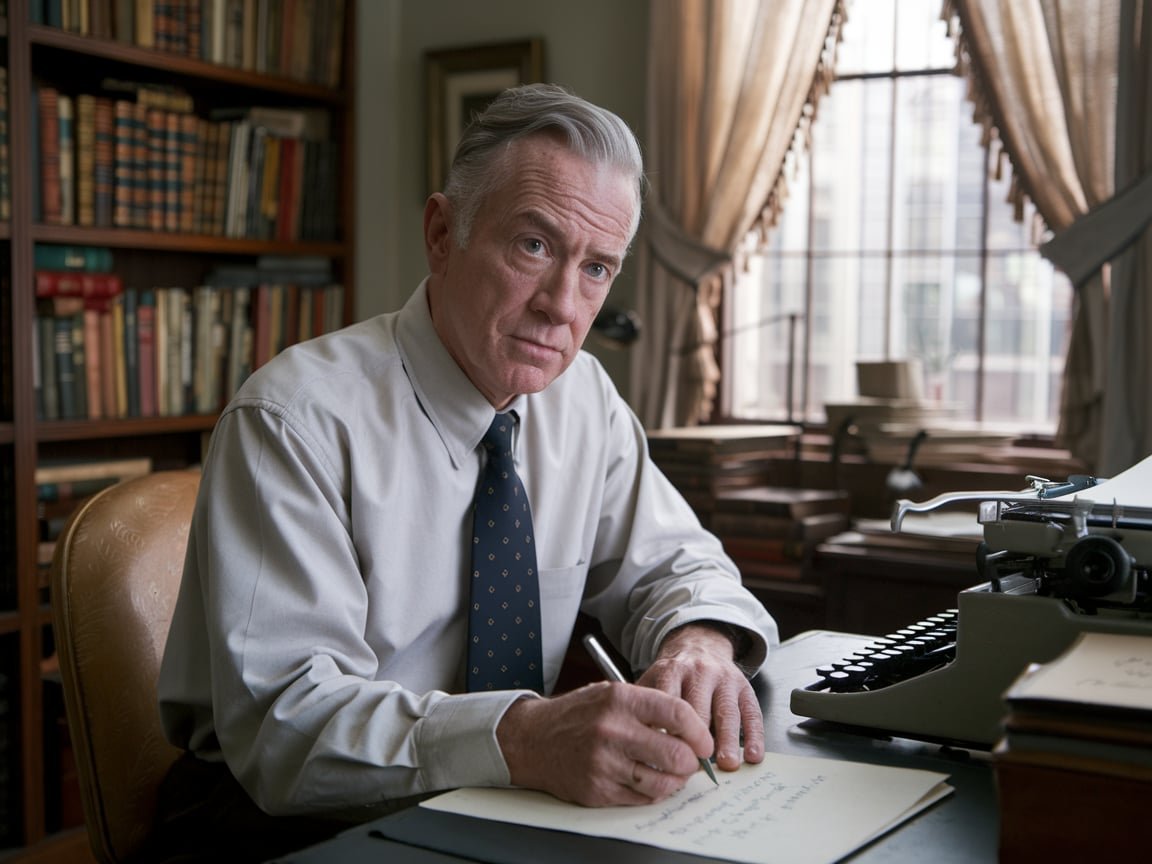Introduction
William Shakespeare‘s “Macbeth” stands as one of the most powerful and enduring works in the English literary canon. This tragic play, believed to have been written in 1606, weaves a dark tale of ambition, betrayal, and the corrupting nature of power. Often referred to as “The Scottish Play” due to theatrical superstitions, Macbeth continues to captivate audiences and readers alike with its psychological depth, poetic language, and exploration of timeless human themes.
In this comprehensive analysis, we’ll delve into the intricacies of Macbeth, examining its historical context, plot, characters, themes, and lasting impact on literature and popular culture. Whether you’re a student, a Shakespeare enthusiast, or simply curious about this iconic play, this exploration will provide valuable insights into why Macbeth remains a cornerstone of English literature and a subject of endless fascination.
Content
- Background and Historical Context
- Plot Summary
- Main Characters
- Key Themes
- Literary Devices and Techniques
- Famous Quotes and Their Significance
- Macbeth's Influence on Literature and Popular Culture
- Critical Reception and Interpretations
- Conclusion
Background and Historical Context
Shakespeare’s Life and Career
William Shakespeare, born in 1564 in Stratford-upon-Avon, was already an established playwright and actor by the time he wrote Macbeth. The play is believed to have been composed in 1606, during the early reign of King James I of England (who was also James VI of Scotland). This period, known as the Jacobean era, was marked by significant political and social changes that influenced Shakespeare’s work.
The Political Climate
Macbeth was written shortly after the Gunpowder Plot of 1605, an attempted assassination of King James I. This failed conspiracy heightened tensions around the themes of treason and loyalty to the crown, themes that figure prominently in the play. Shakespeare, aware of his audience and patron, crafted a story that would resonate with the political climate of the time.
Scottish History and King James I
The play’s Scottish setting and subject matter were likely chosen to appeal to King James I, who had recently ascended to the English throne. James was known for his interest in witchcraft and demonology, having written a book on the subject titled “Daemonologie” in 1597. This royal fascination is reflected in the prominent role of the three witches in Macbeth.
Shakespeare drew inspiration for the plot from Holinshed’s “Chronicles,” a popular history of Britain. However, he took significant liberties with the historical account to create a more dramatically compelling narrative and to flatter his royal patron. The real historical Macbeth, who ruled Scotland from 1040 to 1057, bears little resemblance to Shakespeare’s tragic hero.
Plot Summary
Macbeth’s plot is a rollercoaster of ambition, murder, and supernatural elements. Here’s a concise overview of the main events:
- The Prophecy: Three witches prophesy that Macbeth will become King of Scotland. His friend Banquo is told that his descendants will be kings.
- Lady Macbeth’s Influence: Macbeth informs his wife of the prophecy. Lady Macbeth, ambitious and determined, persuades her husband to kill King Duncan when he visits their castle.
- The Murder of King Duncan: Macbeth kills Duncan in his sleep. Duncan’s sons, Malcolm and Donalbain, flee, fearing for their lives.
- Macbeth’s Coronation: With Duncan dead and his sons gone, Macbeth is crowned King of Scotland.
- Banquo’s Murder: Fearing Banquo and the prophecy about his descendants, Macbeth has him murdered. Banquo’s son, Fleance, escapes.
- The Banquet Scene: Macbeth is haunted by Banquo’s ghost during a royal banquet, raising suspicions about his stability and guilt.
- Macduff’s Family: Macbeth orders the killing of Macduff’s family after learning that Macduff has fled to England.
- Lady Macbeth’s Decline: Consumed by guilt, Lady Macbeth begins sleepwalking and exhibiting signs of madness.
- The Final Battle: Malcolm (Duncan’s son) and Macduff lead an army against Macbeth. The prophecies come true in unexpected ways.
- Macbeth’s Downfall: Macduff, who was “not of woman born” (delivered by cesarean section), kills Macbeth. Malcolm is crowned the new King of Scotland.
This gripping plot, filled with murder, supernatural elements, and psychological turmoil, has kept audiences on the edge of their seats for centuries. It’s a testament to Shakespeare’s storytelling prowess that the basic outline of Macbeth can be so compelling, even when stripped down to its essentials.

Main Characters
Shakespeare populates Macbeth with a cast of complex, nuanced characters. Let’s examine the key players:
Macbeth
The titular character, Macbeth begins as a brave and loyal thane (a Scottish nobleman) of King Duncan. Initially described as valorous and honorable, Macbeth’s ambition, spurred by the witches’ prophecy and his wife’s urgings, leads him down a dark path of murder and tyranny. His character arc is a study in the corrosive effects of unchecked ambition and guilt.
Lady Macbeth
One of Shakespeare’s most famous female characters, Lady Macbeth is initially portrayed as strong-willed and manipulative. She pushes her husband toward regicide, famously calling on dark spirits to “unsex” her and fill her with cruelty. However, her resolve crumbles under the weight of guilt, leading to her mental breakdown and eventual suicide.
Banquo
Macbeth’s friend and fellow general, Banquo is present when the witches deliver their prophecy. Unlike Macbeth, he remains loyal to King Duncan. His ghost haunts Macbeth after his murder, serving as a powerful symbol of Macbeth’s guilt and paranoia.
The Three Witches
Also known as the “Weird Sisters,” these supernatural characters set the play’s events in motion with their prophecies. They represent the forces of fate and the supernatural, blurring the line between destiny and free will.
Macduff
A Scottish nobleman, Macduff becomes Macbeth’s principal antagonist. He suspects Macbeth’s treachery early on and ultimately brings about his downfall. Macduff’s loyalty, coupled with his tragedy (the murder of his family), makes him a sympathetic figure and a foil to Macbeth.
Malcolm
The eldest son of King Duncan, Malcolm flees Scotland after his father’s murder. He matures throughout the play, eventually leading the force that deposes Macbeth and restoring rightful rule to Scotland.
These characters, with their complex motivations and psychological depth, contribute to the richness of Macbeth’s narrative. Their interactions and development drive the plot forward while exploring the play’s central themes.
Key Themes
Shakespeare’s Macbeth explores several interconnected themes that resonate with audiences across centuries. Let’s delve into some of the most prominent:
Ambition and Its Consequences
At the heart of Macbeth lies the destructive power of unchecked ambition. Macbeth’s desire for power, catalyzed by the witches’ prophecy and his wife’s encouragement, drives him to commit increasingly heinous acts. This theme serves as a cautionary tale about the dangers of allowing ambition to override moral considerations.
The Nature of Evil and Guilt
The play delves deep into the psychology of evil and its aftermath. Macbeth and Lady Macbeth’s descent into guilt and madness after their crimes showcases the psychological toll of evil deeds. Shakespeare portrays guilt as a powerful force that can manifest in hallucinations, sleepwalking, and ultimately, self-destruction.
Fate vs. Free Will
The presence of the witches and their prophecies raises questions about predestination and free will. While the witches predict Macbeth’s rise to power, it’s his own choices that fulfill this prophecy. This ambiguity invites audiences to contemplate the extent to which individuals control their destinies.
The Corrupting Nature of Power
As Macbeth gains power, he becomes increasingly tyrannical and paranoid. This transformation illustrates how power can corrupt even those who initially seem noble. The play suggests that the desire to maintain power can be just as corrupting as the initial ambition to attain it.
Gender Roles and Power Dynamics
Through characters like Lady Macbeth, who calls on spirits to “unsex” her, and Macbeth, who questions his own masculinity, Shakespeare explores and subverts traditional gender roles. The play examines how societal expectations of masculinity and femininity intersect with ambition and power.
Appearance vs. Reality
Throughout the play, characters and situations are often not what they seem. This theme is encapsulated in the witches’ line, “Fair is foul, and foul is fair,” and is reflected in the recurring motif of deceptive appearances.

Literary Devices and Techniques
Shakespeare employs a rich array of literary devices in Macbeth, enhancing the play’s thematic depth and emotional impact:
Symbolism
Blood is a recurring symbol throughout the play, representing guilt, treachery, and the consequences of Macbeth’s actions. Other notable symbols include sleep (or the lack thereof) symbolizing peace of mind and conscience, and darkness symbolizing evil and concealment.
Imagery
Shakespeare’s use of vivid imagery brings the world of Macbeth to life. From the “dagger of the mind” that Macbeth hallucinates to Lady Macbeth’s famous “Out, damned spot” scene, the imagery in Macbeth is both psychologically revealing and atmospherically potent.
Soliloquies and Asides
These dramatic devices allow the audience insight into the characters’ inner thoughts and motivations. Macbeth’s soliloquies, in particular, chart his psychological journey from hesitation to resolve to guilt-ridden despair.
Dramatic Irony
Shakespeare frequently employs dramatic irony, where the audience knows more than the characters. This is particularly evident in scenes where characters trust Macbeth, unaware of his treachery.
Foreshadowing
The play is rich with foreshadowing, from the witches’ prophecies to the appearance of Banquo’s ghost. These elements create a sense of inevitability and build tension throughout the narrative.
Metaphor and Simile
Shakespeare’s language is laden with figurative expressions that add depth and nuance to the characters’ speech. For example, Macbeth describes life as “a tale / Told by an idiot, full of sound and fury, / Signifying nothing,” a powerful metaphor for the meaninglessness he feels at the play’s conclusion.
Famous Quotes and Their Significance
Macbeth is replete with memorable lines that have become deeply embedded in the English language. Let’s examine some of the most famous quotes and their significance:
- “Fair is foul, and foul is fair” (Act 1, Scene 1)
- Spoken by the witches, this paradoxical statement sets the tone for the play’s exploration of appearance vs. reality.
- “Is this a dagger which I see before me, / The handle toward my hand?” (Act 2, Scene 1)
- Macbeth’s hallucination of a floating dagger represents his guilt and hesitation before murdering Duncan.
- “Out, damned spot! Out, I say!” (Act 5, Scene 1)
- Lady Macbeth’s famous line during her sleepwalking scene symbolizes her inability to cleanse herself of guilt.
- “Tomorrow, and tomorrow, and tomorrow, / Creeps in this petty pace from day to day” (Act 5, Scene 5)
- Macbeth’s soliloquy upon hearing of his wife’s death reflects his descent into nihilism and despair.
- “What’s done cannot be undone” (Act 5, Scene 1)
- Spoken by Lady Macbeth, this line encapsulates the irreversible nature of their actions and the futility of regret.
- “By the pricking of my thumbs, / Something wicked this way comes” (Act 4, Scene 1)
- This line, spoken by one of the witches, has become a popular cultural reference for the approach of evil.
These quotes not only showcase Shakespeare’s mastery of language but also encapsulate key themes and moments in the play. They provide insight into the characters’ psyches and have contributed to Macbeth’s enduring impact on literature and popular culture.
Macbeth’s Influence on Literature and Popular Culture
Shakespeare’s Macbeth has left an indelible mark on literature and popular culture, its themes and characters inspiring countless adaptations and references across various media.
Literary Influence
Macbeth’s exploration of ambition, guilt, and the supernatural has influenced generations of writers. Authors like William Faulkner, whose novel “The Sound and the Fury” takes its title from Macbeth’s famous soliloquy, have drawn inspiration from the play. The theme of corrupting ambition can be seen in works ranging from Dostoevsky’s “Crime and Punishment” to George R.R. Martin’s “A Song of Ice and Fire” series.
Theater and Film Adaptations
Numerous stage and screen adaptations have brought Macbeth to new audiences. Notable film versions include:
- Orson Welles’ 1948 noir-inspired adaptation
- Akira Kurosawa’s 1957 film “Throne of Blood,” which transposes the story to feudal Japan
- Roman Polanski’s gritty 1971 version
- Justin Kurzel’s visually striking 2015 adaptation starring Michael Fassbender
Each of these adaptations brings a unique perspective to the timeless tale, demonstrating the play’s versatility and enduring relevance.
Popular Culture References
Macbeth’s influence extends beyond high art into popular culture:
- The Simpson’s episode “Lisa the Simpson” features a parody of the “Out, damned spot” scene.
- The band Radiohead named their song “Exit Music (For a Film)” after composing it for Baz Luhrmann’s Romeo + Juliet, but the lyrics reference Macbeth.
- In the Harry Potter series, the concept of prophecies driving characters’ actions echoes similar themes in Macbeth.
Language and Idioms
Many phrases from Macbeth have become part of everyday English:
- “The milk of human kindness”
- “Double, double toil and trouble”
- “Lay on, Macduff”
These linguistic contributions underscore the play’s lasting impact on the English language.

Critical Reception and Interpretations
Since its first performance, Macbeth has been subject to varied critical interpretations and analyses.
Contemporary Reception
In Shakespeare’s time, Macbeth was likely well-received, particularly given its themes that would have appealed to King James I. The play’s exploration of kingship, loyalty, and the supernatural aligned with contemporary interests and political concerns.
Romantic Era Criticism
Romantic critics of the 18th and early 19th centuries, such as Samuel Taylor Coleridge, focused on the psychological aspects of the play. They were particularly interested in Macbeth’s moral decline and the influence of the supernatural elements.
20th Century Interpretations
Modern critics have approached Macbeth from various angles:
- Psychoanalytic critics have delved into the subconscious motivations of Macbeth and Lady Macbeth.
- Feminist readings have reexamined the role of Lady Macbeth and the play’s treatment of gender.
- Postcolonial interpretations have explored the play’s depiction of Scotland and its relationship to English rule.
Political Readings
Given the play’s themes of power and tyranny, Macbeth has often been interpreted through political lenses. Some see it as a cautionary tale about the dangers of absolute power, while others view it as a commentary on the nature of political ambition.
Theatrical Superstition
Interestingly, Macbeth has generated its theatrical lore. Many actors consider it bad luck to say “Macbeth” inside a theater, referring to it instead as “The Scottish Play.” This superstition speaks to the play’s powerful hold on the theatrical imagination.
Conclusion
Shakespeare’s Macbeth remains a pinnacle of world literature, its themes of ambition, guilt, and power resonating across centuries. The psychological depth of its characters and the mystique of its supernatural elements continue to captivate audiences and fuel debate. Macbeth’s influence extends beyond literature, impacting language, media, and popular culture. Its exploration of morality and human nature keeps it relevant in modern times, from classrooms to prestigious theaters. The play’s enduring legacy lies in its ability to reflect universal human struggles, inviting each generation to grapple with the consequences of ambition and the nature of evil. Macbeth stands as a testament to Shakespeare’s unparalleled insight into the human condition, ensuring its place as a timeless and powerful work of art.





